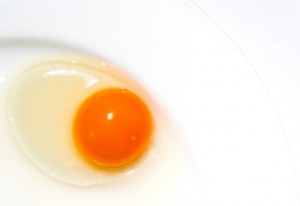
One way to optimize your fertility is to be aware of the changes that occur in your body during your fertile days. One observable pattern of change is cervical fluid. The secretions produced by the cervix (the opening to the uterus) change right before ovulation, creating an environment that helps the sperm survive the vaginal environment and travel through the cervix and the uterus.
Checking your cervical fluid takes only a few seconds and is done before you urinate. It should be tested daily, starting with the day after your menstruation ends.
How to Test Your Cervical Fluid
- Test your cervical fluid at least three times per day before you urinate. Be sure to test in the morning and at night.
- Perform vaginal contractions (Kegels exercises) on your way to the bathroom. This moves the cervical fluid down to the opening of the vagina.
- Check your cervical fluid when you are not sexually aroused as sexual lubrication can change the texture of cervical fluid.
- Separate your vaginal lips and check your cervical fluid at the lower opening (closest to your anus).
 Feel the texture of the cervical fluid before looking at it. Rub your fingers together and note if it feels dry, sticky, creamy or slippery. Is it slippery like egg-white?
Feel the texture of the cervical fluid before looking at it. Rub your fingers together and note if it feels dry, sticky, creamy or slippery. Is it slippery like egg-white?
- Look at the cervical fluid while slowly opening your fingers and see if it stretches. If it does stretch, how much does it stretch before it breaks?
- If you have a hard time differentiating between cervical fluid and vaginal secretions you can do a water test. Cervical secretions are insoluble – if you drop the secretion into a glass of water the cervical fluid should form a blob that sinks. Vaginal secretions will simply dissolve.
- As you get closer to ovulation your cervical fluid may become so thin that it may actually disappear, but fertile-quality cervical fluid will make your vagina feel slippery or lubricated when walking around or wiping with toilet tissue.
Terms Used to Describe Cervical Fluid
Sticky – opaque white or yellow. Can be fairly thick. Not wet. Can feel like paste, gummy or
rubbery.
Creamy – milky or cloudy, white or yellow. Can feel wet but thin. Doesn’t form peaks when fingers are separated but remains smooth. Similar to hand lotion.
Egg-white – usually clear but can have opaque streaks in it. Very slippery and wet (like a raw egg white). May stretch for several inches between the fingers. This is your fertile cervical fluid.
Identifying Your Peak Day
The peak day is the last day you have either a lubricative vaginal sensation OR produce fertile (egg-white) cervical fluid. This is your peak day because it occurs either a day before you ovulate or on the day of ovulation.
You will only know that it was your peak day in retrospect, on the following day you will notice your cervical fluid has begun to dry up.
When used with basal body temperature testing, you will begin to recognize patterns of your fertile cycle and greatly improve your chances of conceiving!
Disclaimer
The advice provided in this article is for informational purposes only. It is meant to augment and not replace consultation with a licensed health care provider. Consultation with a Naturopathic Doctor or other primary care provider is recommended for anyone suffering from a health problem.
















[…] articles on this website will teach you how to track your basal body temperature and cervical fluids, but this article will take you through the hormonal changes that allow our body to become pregnant […]